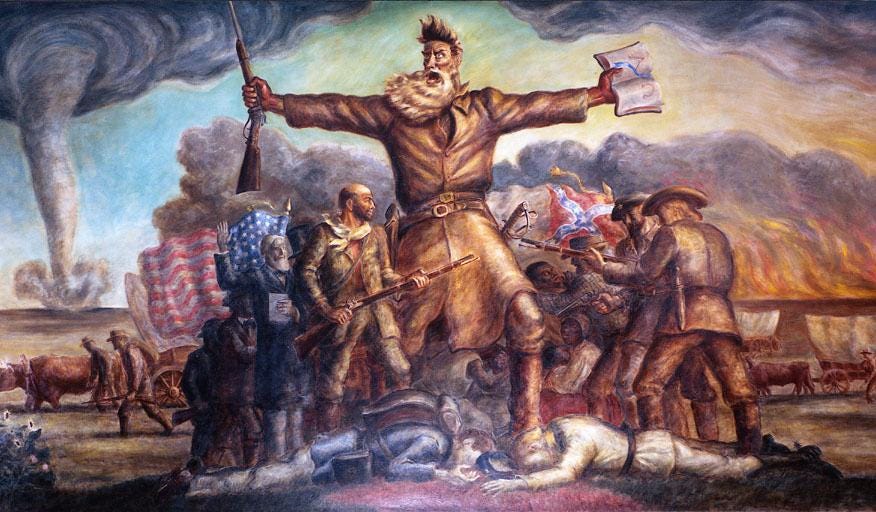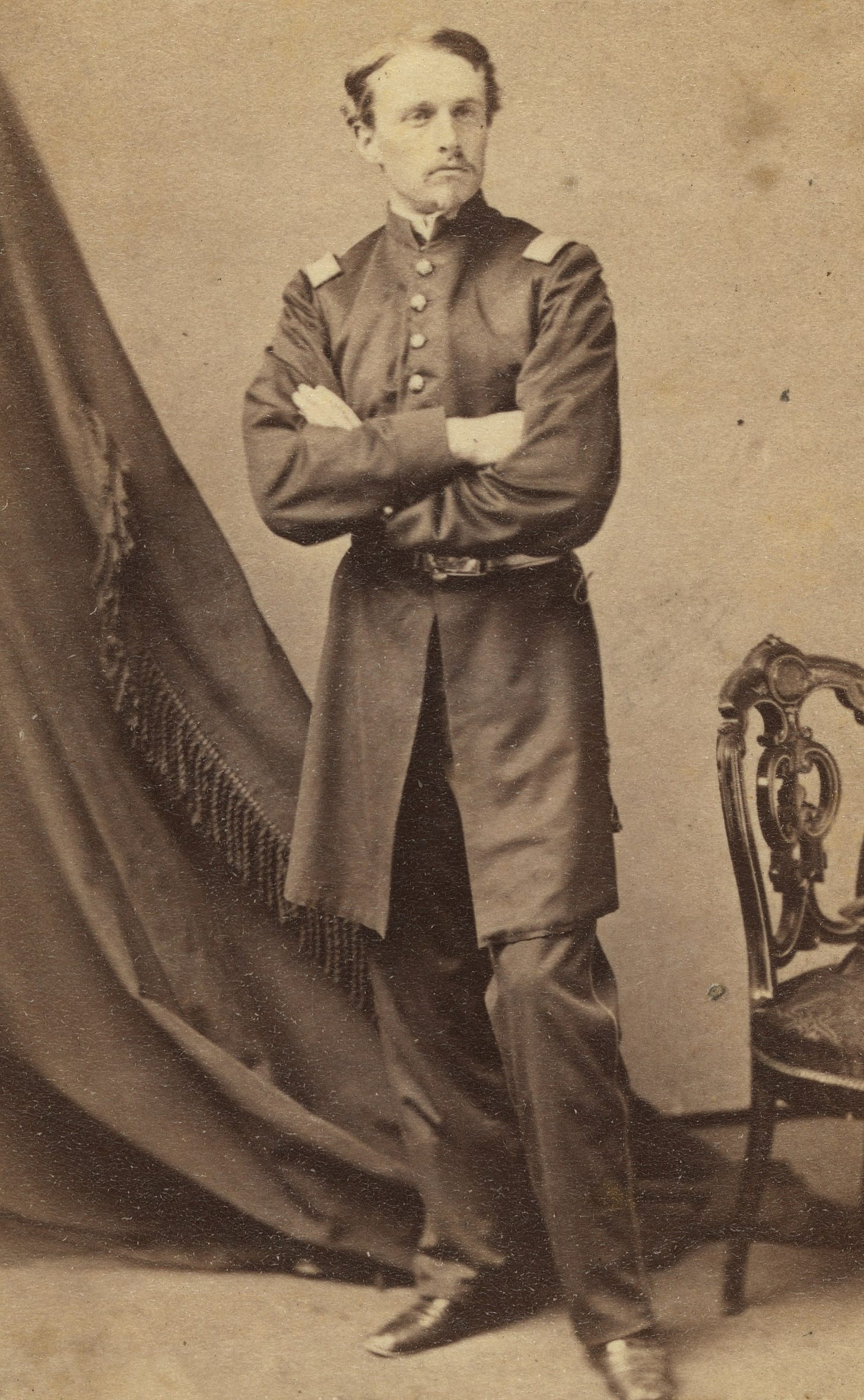I’ve tried my best, over the course of reading and writing about Robert Gould Shaw, to push aside the fact that he would eventually come to command a regiment of Black soldiers in early 1863. Shaw will be forever associated with the men of the 54th Massachusetts and righfully so, but this perspective can hinder the job of the historian.
Focusing on the last few months of Shaw’s life, before his death at the foot of Battery Wagner in July 1863, can obscure the many twists and turns that led him to accepting command of the first Black regiment raised in the North. Approaching the subject in this way can lead to a mischaracterization of earlier events as little more than a precursor to what we know awaited Shaw.
Rather than read back into the past, I’ve trid my best to take Shaw on his own term, to place myself in his shoes, and acknowledge the uncertainty or contingency that governed his military experiences at particular moments in time.
That hasn’t always been the case with Shaw. The Hollywood movie Glory—still my favorite Civil War movie—quickly moves to his command with the 54th Massachusetts with only a few references to his earlier military career.
Shaw’s two biographers also fall victim, at times, to reading back into the past. Consider how historians Peter Burchard and Russell Duncan describe Shaw’s and the Second Massachusetts Regiment’s encampment in and around Harpers Ferry in July 1861.
Burchard’s book One Gallant Rush was published in 1965 and served as the basis for Glory’s screenplay. Burchard does an excellent job of highlighting the importance that abolitionists and reformers in Shaw’s family circle attached to John Brown and his death on the gallows following his failed attempt to incite a slave insurrection at Harpers Ferry in October 1859. He quotes Wendell Phillips, Massachusetts Governor John Andrew, Ralph Waldo Emerson, and Lydia Maria Child, who corresponded regularly with Shaw’s mother.
“We have given the sword to the white man,” wrote Phillips, “the time has come to give it to the black!”
As for Shaw’s place in this framing:
In our time, John Brown is often dismissed as a murdering, maniacal devil who rose out of a sleepy Connecticut town and streaked across the nation’s horizon like an evil bolt of summer lightning. Shaw, however, as well as elder members of the antislavery community and people on its fringes, saw him as a towering martyr. To the people who devoted their lives to the destruction of the ‘peculiar institution,’ Brown was a great idealist who had lived by the sword because he believed that only by the sword could the black man be freed. (p. 42)
Burchard clearly interprets Shaw as an abolitionist warrior, who was simply waiting for the opportunity to arm and command Black men in a war whose only purpose was the destruction of slavery.
Russell Duncan provides much of the same framing in his more recent biography, Where Death and Glory Meet, published in 1999. He quotes many of the same people as Burchard. Duncan concludes that Shaw was “inspired by what he saw” and that while in Harpers Ferry he “reckoned with the ghost of John Brown.”
But what did Shaw actually have to say about the “Meteor of the War”? Very little it turns out.
On July 18, 1861 Shaw wrote to his mother from Charlestown, Virginia: “I saw John Brown’s prison this morning & the place where he was executed. The slaves here seem well cared for but they are evidently glad to see us.”
Twelve days later, Shaw wrote to his sister from Harpers Ferry. Both Burchard and Duncan cite this passage:
We use the engine-house which John Brown took possession of, for a guard-house; and there are three or four loop holes which he made to fire through, and marks of musket-balls on the walls inside. It seems to be the worst place he could have chosen to defend agains an attack; for when the doors are shut, it is like a brick box, as all the windows are high up, and his loop-holes are so small that they give no range at all to the men firing through them. (BECF, 119)
Keep in mind that Shaw was describing Brown’s final moments—in what his family believed was the beginning of a holy war against slavery—and all he chose to share with them is an assessment of the building’s defensive weaknesses. Brown, according to Shaw, made a poor command decision.
Both Burchard and Duncan were justified in citing this passage, but not for the reasons that they acknowledge. There is no evidence that Shaw ever “reckoned” with or identified in some personal way with the legacy of Brown as an abolitionist while he was encamped at Harpers Ferry.
The passage is, however, reflective of Shaw’s state of mind at the time. Shaw was new to command and was still in the process of learning his responsibilities, especially military tactics. His letters from the time point to an obsession with maintaining unit discipline and Shaw was anxious to experience battle for the first time.
Shaw’s parents had long encouraged him to embrace their abolitionist/reformist principles. This didn’t simply include agreeing with a set of beliefs, but a committment to action as well. I can only imagine their frustration and perhaps disappointment after reading these letters. Did their son really take nothing more away from being in the presence of the martyr John Brown?
As far as I can tell the answer is: No.
While encamped on Maryland Heights, across from Harpers Ferry, in early August, Shaw broached for the first time the possibility of recruiting Black soldiers in a letter to family friend, Sydney Howard Gay.
Isn’t it extraordinary that the Government won’t make use of the instrument that would finish the war sooner than anything else,—viz. the slaves? I have no dout they could give more information about the enemy than any one else, and that there would nothing easier than to have a line of spies right into their camp. What a lick it would be at them, to call on all the blacks in the country to come and enlist in our army! They would probably make a fine army after a little drill, and could certainly be kept under better discipline than our independent Yankees.” (BECF, 123)
Shaw chose not to share these thoughts with his immediate family, though it is certainly possible that they heard about it through Gay. For Shaw, recruitment had little to do with the morality of slavery, but with the more practical question of how to bring the war to a speedy conclusion.
While it is tempting to see this development as a reflection of Shaw’s “reckoning with the ghost of John Brown,” it had much more to do with his interaction with the regimental quartermaster, Richard Morris Copeland. In fact, in the summer of 1862 Shaw accompanied Copeland to Washington, D.C. to convince the administration to accept Black men into military service. Their plan failed and Copeland was eventually cashiered from the army for unrelated reasons.
It is tempting to see Shaw’s lifeless body on the beach of Morris Island, surrounded by fallen Black soldiers, as the product of an inevitable progression that took root early in the war at Harpers Ferry. The truth, however, is more complicated, more messy.
Understanding Shaw, like any historical figure, requires that key moments in time be properly contextualized and an acknowledgment that a future, which we all know awaited him, was not inevitable.






Kevin, this was a seriously good piece. Shaw was young---not quite 26 when he died, and he clearly was "feeling his way" through life, with all of the pressures of parental expectations, and so forth. I have always thought that Matthew Broderick's performance in the movie has been under-appreciated. Looking forward to the book.
Like your other correspondents, Kevin, I too am looking forward to that next book!